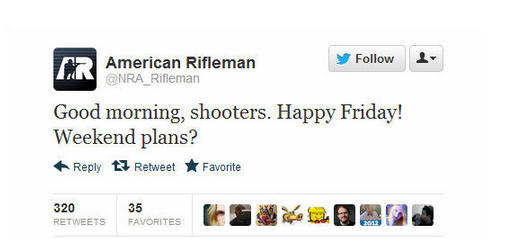I had the pleasure of taking part in GoToMeeting in Canada’s #FutureOfWork debate on Twitter recently. It brought together business and technology discussing emerging trends with respect to Collaboration, The Internet of Things, Virtual Reality and Workforce Disruption that will impact how business will function in the future.
And while I saw substantial perspective from the business side, I noticed that the debate was lacking the voice of the employee: their viewpoint, their receptiveness to these new notions, and whether there was some alignment to how the business perceived its coming.
This also allowed me to step back and determine how the #FutureOfWork is really impacted by the events of the preceding years: the economy, technology and the rise of the consumer. All this evolves the #FutureOfBusiness.
So, I’ve decided to write a series that provides a view into:
- the changing environment i.e. what’s happening around us that necessitates the #FutureOfBusiness
- how this change will impact business
- how this change will impact the individual employee.
This post will focus on the market and the environmental factors that has brought us to where we are today.
Evidence of Change Continues to Reveal Itself
Unless you’re burying your head in the sand, the world as we know it is changing. Things we’ve come to rely on as standards that were once sustainable– are no longer working. Economic, global, technological and consumption events have and are making business rethink the tried and true. Business does NOT live in a vacuum. These days, the customer voice, the employee actions – both enabled by technology – radically shift the power away from the business and much more into the hands of the market.
Some of these fundamental shifts that will change business forever follow below.
An Unstable World Economy
2008 has revealed to the world that no business or government, no matter how powerful or seemingly stable, was immune to the Financial Crisis. Major market sectors, that seemed to have always been unbreakable, were breaking. The contagion that first started with the financial downturn of the housing market from the questionable subprime mortgage practices, quickly spiralled into the financial sector domestically and abroad. This, in turn, delivered its blows to industries like the auto sector, which relied heavily on the credit industry. The likes of General Motors, Chrysler and Ford plus the largest insurance Giant AIG, among others were left vulnerable. Powerhouse financial institutions like Freddie Mac, Fannie Mae and Lehman Brothers were not so fortunate.
This not only put the financial industry in disarray, it created a destructive path abroad as markets like Japan, China and other fiscally-strong nations were locked in a recession by the end of 2008.
In the last few years, we were witnessing the European economy begin its own collapse. The term, “austerity” became the prevailing defence in Europe as economies like Ireland and Greece and were forced into a period of rationalization – one they didn’t see coming, hence were unprepared for. This domino effect quickly translated into negative impacts on pensions, education, healthcare and employment.
For the first time since the first depression has the US felt a significant the impact. With the highest debt load in its history, the most powerful nation on earth was, itself, left powerless.
Resulting Business Impacts
Global rationalization has brought with it a new mindset. Spending cuts across government and organizations has surfaced a new mindset: business must be more accountable. Resource constraints and squeezed budgets has, more than ever, challenged business to allocate expenditure in areas that derive the most business value.
Marketers no longer have the luxury of free-flowing budgets. Marketing is no longer a cost-centre. We are more accountable than ever to the business bottom line. So the KPIs that we previously peddled to prove the value of our efforts, have now been displaced with Return on Business Investment. This is not about to change anytime soon. Impressions, clicks, cost per acquisition, and web traffic will have less relevance going forward unless they have strong attribution to the business objectives.
The Balance of Power has Shifted
Technology has splintered communications, which has changed from a one-way to two-way channel. It’s radically changed the communications dynamics. Technology is enabling the market to evolve at a pace much faster than a company’s ability to adapt. Up until just over a decade ago, the voice of the consumer was but a whisper. Nowadays it’s being heard loud and clear.
Conversation has evolved consumer behaviour. Technology has enabled abundant sharing of opinions and recommendations. This has now become a primary source of influence for many consumers. Connected, communicating customers and employees have more choices, and more amplified voices, than ever before. They have more knowledge than ever before. The strength of the collective voice and the speed at which this information travels has squarely transferred power from the business to the hands of the consumer.
These real time discussions are having more impact on business, and have motivated business to transform process to maximize effective communication. Netflix has been one of the few companies that has capitalized on the value of peer communication and influence and continues to reap the benefits today.
Other examples of this power shift that have forced businesses to take notice include:
Employees Have No Loyalty
Employees, angered and frustrated at company decisions have made, have felt powerless. Now employees who cannot impact changes internally can take their messages to their networks and allow the media and world, at large, to be judge, jury and executioner.
I was at Yahoo! at the time the infamous Peanut Butter Manifesto memo was leaked to the press. Brad Garlinghouse, Sr. VP of Yahoo! wrote a memo to the Executive team expressing his frustration at the current state: “lack of focus….lack of vision… lack of accountability and ownership”. This memo was one of the first to reveal the abating fear of the individual contributor. And while the company made attempts to find its perpetrators, it came to the eventual realization that it was unable to deter similar events if they arose.
As the RBC Outsourcing scandal has proven, the larger they are, the harder they fall. At a time when one of Canada’s largest banks had laid off employees in the IT division, did information leak about those impacted employees having to train their replacements – outsourced temporary foreign workers. The leaked news grew rapidly within social media as a Boycott RBC Facebook Page, quickly garnered an enraged audience. The scandal also came at a time when RBC was disclosing its more-than-fruitful quarterly earnings.
Companies are making mistakes
There are incessant examples of company faux pas in social media:
While the nation wrestled with the aftermath of a shooting in Colorado that left 12 people dead, a Twitter account for the National Rifle Association had this to say:

In Toronto, in the aftermath of a snowstorm, the City of Vaughn Twitter account erroneously posted,

Many of these incidences increases a company’s vulnerability. The resulting reputational impacts have been difficult to subdue. As Dell, United and Dominos Pizza can attest, the business requires a significant reality check to mitigate future disasters.
Social Data Begins to Surface Context and Enable Sensor Technology
This dialogue has drastically increased this well of data and information. The individual becomes the product as behaviours and events continue to feed this data well at alarming rates. Aggregated and analysed, businesses now have, at their disposal, a deeper understanding about their customers – profiles that extend beyond demographics to behavioural, influence and preference propensities. Making sense of the real-time nature of this data will force business to rethink and alter process to properly manage its influx. It’s this information that has the ability to radically inform and provide more power in business decision-making.
What’s more, the Internet of Things that introduce wearable technology and more sensor-type applications for business and environment, have already begun surfacing context that allows innovations in these areas:
- Smart Parking – to find free parking spaces within specific locations
- e-Health – to predict the movement of ailments and potential epidemics across geographies;
- Smart Environment – to detect C02 emissions, and water quality
- Retail efficiency: channel optimization, and inventory management
As per this article :
Now we are able to collect data everywhere from our environment, infrastructures, businesses and even ourselves, and this huge amount of information is generating a new ecosystem of business opportunities around its storage, analysis and accessibility.
The Advent of Mass Customization
If the above hasn’t made it clear, the strength of the consumer voice has made business rethink the business approach by moving away from product as a core business function. Instead, customer experience has forced its way to the front of the line. Dave Gray alluded to this in his book, “The Connected Company”,
Product saturation/abundance was bourne in an age of mass production and mass communication. These days, the opposite is true. Enter Mass Customization that’s given rise to increased customer service.
We are moving to an increasing niche economy – increasing fragmentation than ever before. Everybody has shoes, everyone has a TV. Now, it’s about taking those mass goods and creating more personalized products to suit individual customer needs. This custom-made process can be delivered with low unit costs that are traditionally associated with mass production.
Take, for example, Nike ID, which allows the consumer to design your own shoe.
In other cases, customers can purchase a product which has been customized to meet his/her exact needs, for example the color of his/her car, his own drawing on a T-shirt or even, creating a pair of customized sneakers.
From a company perspective, mass customization has been defined as the “ability to provide customers with whatever they want, whenever they want it, wherever they want it and however they want it.” This poses some significant competitive advantage in the future.
The iPhone is the most practical example of mass customization. While the base product has limited options for the user, the ability to customize the phone via applications creates an inherent user value that now distinguishes it from user to user.
The Future of Business is Here
It’s clear that what we’re experiencing is, by no means, a trend. The economy, as we know it, will continue to struggle. Pundits are already forecasting the next financial downturn and it’s safe to say that stability will be less than a foregone conclusion.
Technology will advance to continue to enable peer-to-peer discussion and influence consumer-to-business collaboration more than ever before. However, it also has the potential to displace human capital.
Changes will be required at an organizational level to capitalize on the wealth of advocacy among its employees, customers and stakeholders and take advantage of these levers to propel the organization to new heights.
Look out for the 2nd in the series of the #FutureOfBusiness as we focus on these impending changes for business.
This post originally appeared on ArCompany
photo credit: SomeDriftwood via photopin cc
